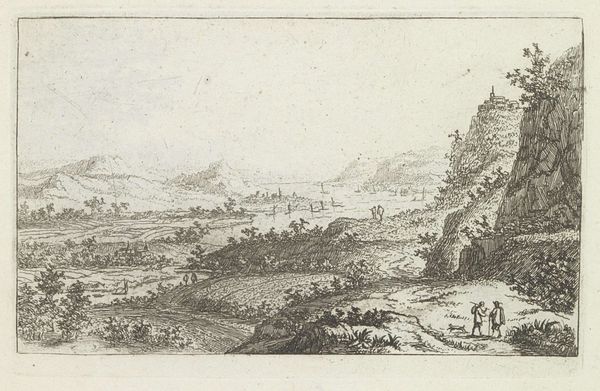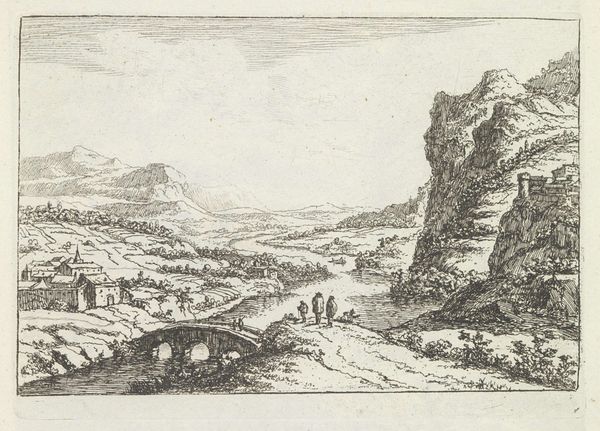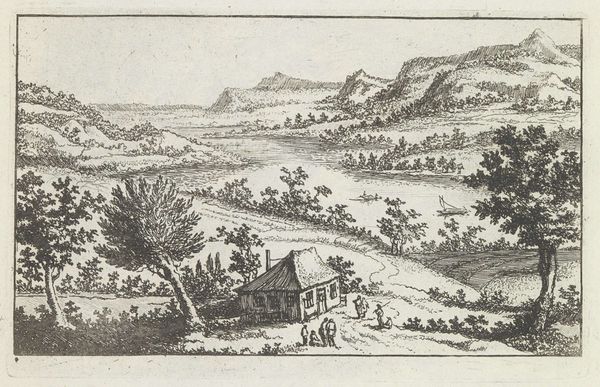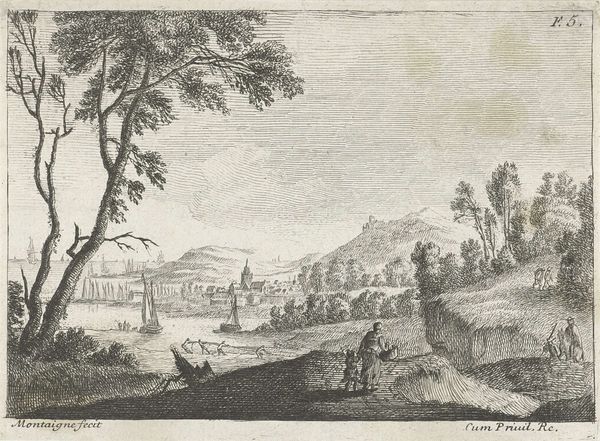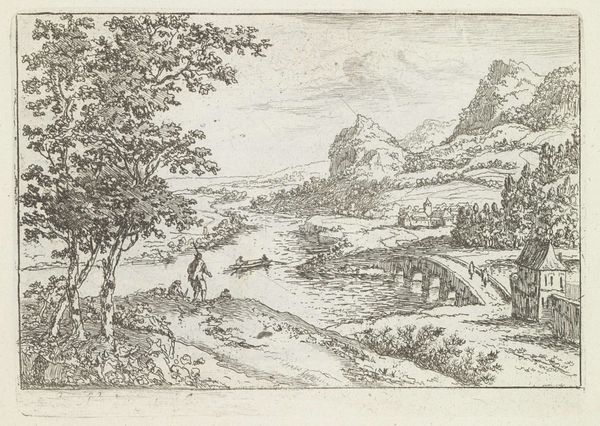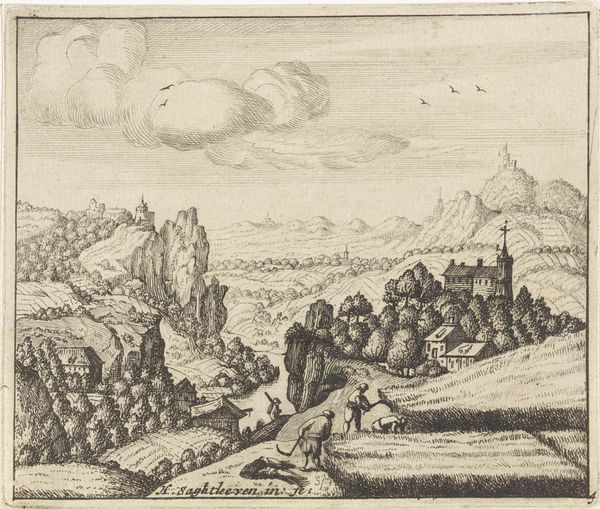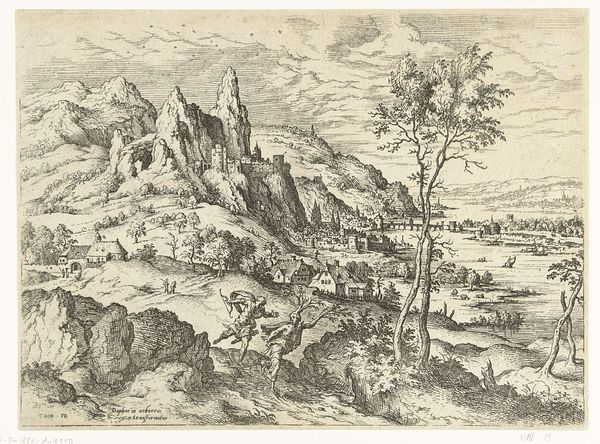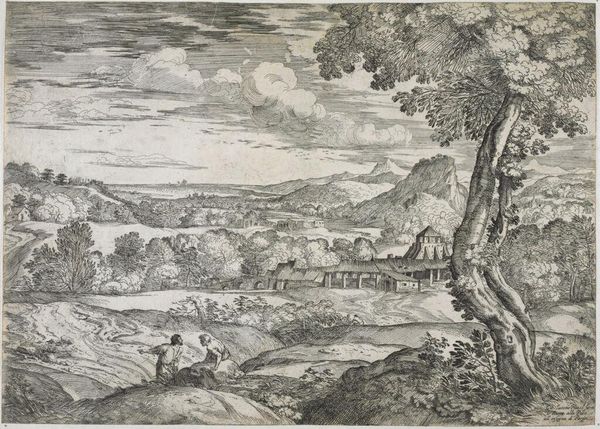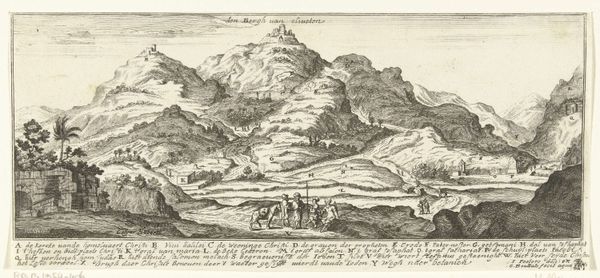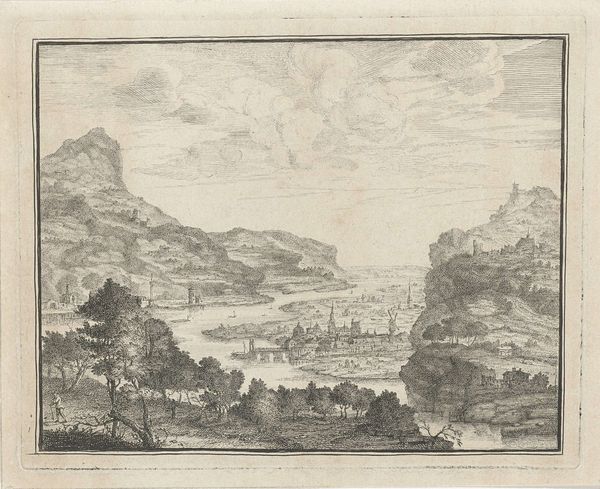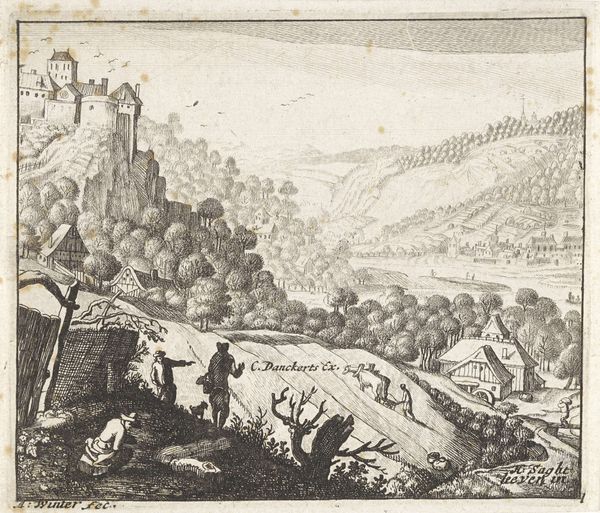
drawing, ink
#
drawing
#
baroque
#
pen drawing
#
landscape
#
ink
Dimensions: height 79 mm, width 149 mm
Copyright: Rijks Museum: Open Domain
Curator: Today we’re observing "River in a Mountainous Landscape," an ink drawing created between 1602 and 1656. It resides here at the Rijksmuseum. Editor: There’s a serene quality to it, wouldn’t you agree? Despite the meticulous lines, the overall impression is rather dreamlike and contemplative. Almost as though one were looking into a carefully curated memory. Curator: The piece deploys baroque principles—note the sharp contrast and delicate lines in pen—creating a sense of depth within a predominantly linear structure. Semiotically, the interplay between open and enclosed spaces produces a distinct dialectic. Editor: And that juxtaposition surely isn’t accidental. Water often signifies the unconscious, here paired with mountains representing obstacles or journeys. See how small the figures appear against that craggy peak in the distance. They’re literally dwarfed by their potential passage through nature’s obstacles. Curator: Note, too, how the village in the background presents its own symbolic contrast. Its structures display an orthogonal order distinct from nature, introducing cultural influence. That order also presents itself near the observing figures in the right foreground. Editor: I am also compelled by how Honthorst places religious iconography carefully amid the nature and the dwellings. That steeple rises confidently against the horizon, a symbolic counterweight perhaps, against the formidable mountain behind it, guiding the small figures. The steeple becomes a symbolic, cultural tool to balance their anxieties and embolden those men in facing their uncertain paths through those mountains in the distance. Curator: Precisely, so one can also decode a societal hierarchy through these symbols of home, nature, and church represented formally through shape, shade, and space. This then becomes less a portrait of figures, but of an epoch, expressed in artistic composition. Editor: Ultimately, regardless of structure and form, the piece resonates as a universal journey with a collective, familiar purpose that is quite affecting for the sensitive observer. Curator: Yes, regardless of the technique, it allows our minds to engage and project on a universal journey toward fulfillment.
Comments
No comments
Be the first to comment and join the conversation on the ultimate creative platform.
